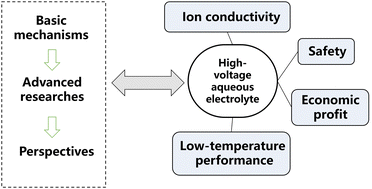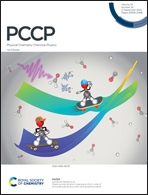Challenges and prospects of high-voltage aqueous electrolytes for energy storage applications
Abstract
Aqueous electrolytes have attracted widespread attention as they are safe, environmentally benign and cost effective, holding great promise for future low-cost and sustainable energy storage devices. Nonetheless, the narrow electrochemical stability window caused by water electrolysis, as well as the trade-off between the stability window and other properties remain the bottleneck problem for the practical applications of aqueous electrolytes. Deep insights into the correlations between the microscopic physicochemical and electrochemical mechanisms and the macroscopic properties of aqueous electrolyte are essential for the envisaged applications, yet a systematic analysis of the recent progress in this area is still lacking. In this Perspective article, the basic mechanisms and influencing factors of water electrolysis including the hydrogen evolution and oxygen evolution reactions is critically examined. We systematically review the current state-of-the-art on high-voltage aqueous electrolytes focusing on the fundamental mechanisms of ion kinetics leading to dynamic electrolyte restructuring. Recent advances on the optimization of high-voltage aqueous electrolytes are also summarized. The existing challenges are identified and perspectives for exploring and developing future high-voltage aqueous electrolytes are provided.

- This article is part of the themed collection: PCCP Reviews


 Please wait while we load your content...
Please wait while we load your content...